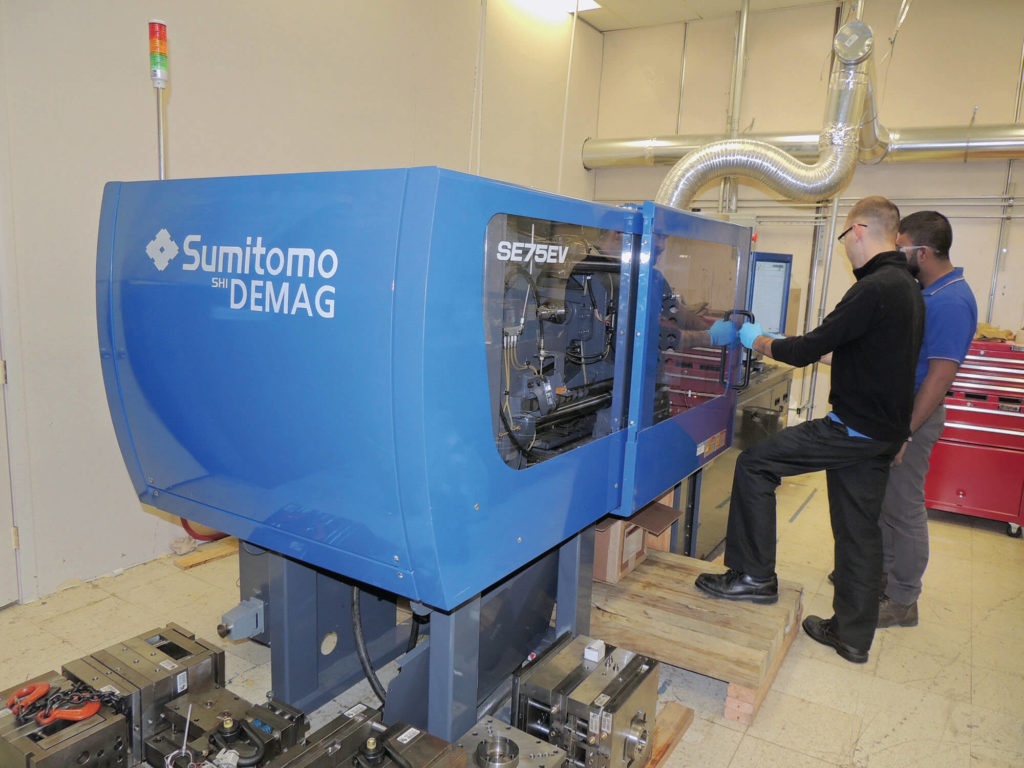Manufacturing Scheduling Software for Small Businesses – Best Practices and Benefits

A custom automaker building luxury limousines in New Jersey for the transportation industry; a textile factory in South Carolina making towels by the pound on a commodified basis; and a fiberglass boat manufacturer in Ohio making two-thirds of its production for mass sale and one-third of its production for custom orders all have one thing in common – they run their factory on a production schedule.
But it only takes a moment to realize that they are very different types of schedules. The limo manufacturer is a make-to-order (MTO) producer, while the towel factory is make-to-stock (MTS), and the boat company is a blend of MTO and MTS. As a result, the material requirements and planning that go into a production schedule are different for all three.
In its simplest form, production scheduling is like a roadmap, helping you understand the direction and the time required to get there. And a good manufacturing schedule will have several key deliverables:
- It will hold down labor costs by optimizing changeover times and eliminating slack time.
- It will optimize equipment utilization to take full advantage of available capacity.
- It will balance materials requirements to minimize work-in-process (WIP) and hold down safety stock levels.
- It will incorporate operational and maintenance requirements into the final schedule through proactive communication with other departments, and it will be able to adjust to unforeseen issues as they arise due to unscheduled maintenance, absence, and other operational variables.
To accomplish these deliverables, manufacturing schedules should be deployed using best practices and by making full use of production scheduling software to process the massive amount of data required by modern manufacturing regardless of whether it is MTO, MTS, or a blend.
Best scheduling practices
Achieving an optimized manufacturing schedule requires understanding the “knowable”, things that must be known regardless of whether the manufacturing schedule is done on paper or through the use of the most advanced scheduling software available. This requires an understanding of the type of manufacturing operation in use, the scale of the operation, and a clear comprehension of current vendor performance. These best practices include:
- Know Your “Make To” Mix – As seen in the examples above, all manufacturing is not created equal. An optimized manufacturing schedule must take the method of production into account. Make-to-order may require additional planning steps for custom fittings and sub-assemblies to be ready when needed. Similarly, it is more difficult to time production steps when each part or assembly is a “one-off”, so flexibility and the capability to adjust is required when production steps move faster or slower than expected.
For make-to-stock, especially for high volume and commodified goods, timed jobs may be very accurate and equipment condition, speed, and capacity well documented. Further; formulas, mixes, or blends may be very precise, allowing better staging of raw materials on more of a JIT footing. In this type of production scheduling, it is important that changeover and machine cleaning time be known and incorporated by scheduling staff into the build of the manufacturing schedule. Depending on the type of product, scheduling the right products in the right order can increase or decrease cleaning or changeover times. Clear communication with manufacturing management will help understand what order of run results in the least changeover from lot to lot or style to style.
- Know Your Production Capacity – Understanding machine capacity is essential for producing an optimized manufacturing schedule. Machine speed, production rate, average quality fallout, and other variables can be documented to allow the schedule to trigger the right volume to be produced for each item. And this data is also useful when adjusting for changes in product mix. These changes may be seasonal, or they may signal a shift in consumer tastes over time.
- Know your Product Mix – In the last few decades, modern manufacturing has shifted to a lower volume, higher SKU mix to address consumer trends, and to take advantage of advances in equipment and machinery that allow for quick changeovers and faster “on spec” startups. While these changes have meant better control of runs and more agile manufacturing overall, an effective manufacturing schedule must still reflect the realities of the product mix the factory is tasked to produce. A lack of understanding of product mix in scheduling could result in an imbalance of labor on the production floor with either too little or too much labor deployed at the wrong time. It can also lead to an imbalance of WIP levels in various downstream processes where products may require more, or less, WIP at the specific process level than can be produced. These imbalances can occur irrespective of the understanding of the capacity for the operation.
- Know Your Supply Chain – Regardless of whether a product is simple and mass-produced, or complex with thousands of required parts, every product has material requirements that are usually sourced from a variety of vendors. And each of these vendors has different payment requirements, different production lead times, and different shipping schedules. An optimized manufacturing schedule is not possible unless the timing of these variables is understood. While that may sound like a statement of the obvious, more than one manufacturing operation has been idled due to a misunderstood delivery mode, method of payment, missing a certification, or some other non-production-related variable. Knowing the supply chain means building in the correct triggers to accommodate as many variables as possible to ensure raw materials, parts, and components arrive on time.
- Know Your Production Data Capability – Most modern manufacturing equipment comes with monitoring capability built-in. But not all equipment in production facilities is of the same generation and in many cases, equipment may not even be produced by the same OEM. As a result, data collection capability and the frequency in which it is available may vary. It does no good to produce a manufacturing schedule that requires daily adjustment if it takes a week to retrieve, merge, and analyze data from the floor. Understanding the data collection capability and building the frequency of adjustment into the manufacturing schedule will reduce downtime and help avoid labor and material shortages.
Without adhering to best practices, an optimized manufacturing schedule is not possible. This holds true regardless of the production method. But for a truly optimized schedule, manufacturing scheduling software exists that will allow all the above practices to be automated to improve the quality of the schedule.
Scheduling software benefits
Most companies no longer schedule production manually. The complexities of modern manufacturing have made it next to impossible to adequately keep track of all the variables required to make everything come together. Instead, some companies use a mix of systems to automate some functions. This mix may include independent software systems combined with legacy applications, spreadsheets, or employee scheduling software.
But others use manufacturing scheduling software to control the planning process and automate the entire process under one system. For larger companies, it can be part of an ERP/MRP system or a plug-in to an existing ERP system. Scheduling systems such as those used by large corporations as an extension of their ERP system are well documented. But for small and medium businesses (SMB), this scheduling software can be stand-alone or part of a dynamic, cloud-based MRP. Regardless of the origin, there are many benefits to small and medium businesses in using manufacturing scheduling software.
Read more about Enterprise Resource Planning (or ERP).
- Cost – Manufacturing scheduling software can be a cost-effective choice for small and medium-sized manufacturers. As these companies have not yet scaled, or if they are just beginning to scale, a full-fledged ERP may not yet be a business necessity. Companies of 10-200 people often need to gain control of their production planning and inventory to gain process control that allows them to continue growing. Scheduling software can help them understand their production requirements better in the present and give them the tools needed down the road to merge into an MRP or an ERP system. And manufacturing scheduling software, as a standalone or as part of a small business MRP, often has the option of selecting and paying for features a la carte’. Companies can select features and pay only for what they need and can increase or decrease functionality as required.
- SaaS-Based – Everyone has heard of the cloud, but a cloud-based scheduling software for manufacturing gives small to medium companies several advantages in scheduling their operation. One is that the system is web-based and not installed on company computers and servers. This reduces the need for in-house or contracted IT services and the required maintenance and debugging that may be required to take the system live and from time to time thereafter. Software as a Service also means that maintenance and upgrades to the system are continuous, again reducing the need for in-house expertise and allowing the company to always have access to the most current version. Access can be licensed, or subscription-based, but is accessible from any location where there is internet service.
- Flexible “Make To” Mix – Manufacturing scheduling software is highly customizable for every need. Bill of materials can be multi-level for deeper requirements often needed to make to-order and custom-produced items. Or, they can be streamlined and simplified for make-to-stock or blended operations. Unlike larger scheduling platforms or those embedded in ERP systems, manufacturing scheduling software is often customizable, allowing an SMB to enable only the features required. Manufacturing orders may be manually triggered or automated, depending on need. And depending on production method and lead times, manufacturing orders may be created from forecasts, directly from customer orders, or from “on-hand” reports. This gives SMBs flexibility to factor in lead times, stock levels, custom requirements, and other elements that drive production.
- Forecasting – Most scheduling software will have forecasting capability. As SMBs become more sophisticated and gain a deeper knowledge of their production requirements, features such as forward scheduling and backward scheduling can help them plan production using JIT methodology. It may even allow “what-if” scenarios in planning. This is a big advantage for SMBs whose sales trajectory is uncertain or when undergoing a huge surge or drop in orders. It is also beneficial for companies with very long supply chains. As in larger enterprises, for many SMB critical components and parts may be sourced from a variety of sources in Asia or South America. With long, or uncertain lead times, “what-if” capability allows a company to build contingency plans, so the impact of disruptions can be mitigated if not avoided.
- Shop Floor Control – Manufacturing scheduling software can help gain control of the shop floor environment. Production capacities are programmable and can be tied directly into inventory where inventory min/max volumes can be preset to assist planners. Schedulers have visibility over parts availability or shortages, often in dynamic shortage lists that allow immediate order of the part.
Product mix issues are also manageable through the software allowing schedulers to assign operations and work centers, bring additional work centers online and issue these instructions directly to the shop floor via the schedule. This is a tremendous advantage for SMBs as opposed to larger manufacturing environments where labor planning is often disconnected from scheduling or controlled by operations or production management unrelated to scheduling needs. Dynamic work center and labor planning give SMBs utilizing scheduling software the advantage of flexibility compared to large enterprise scheduling or through some ERPs.
- Simplicity – Large companies often have dedicated staff with intensive training on their ERP to build and coordinate the manufacturing schedule. Small and medium companies may not have that luxury. Instead, in an SMB, the scheduler may also be the purchaser, and the quality manager, as well as a host of other jobs. In these environments where the staff wears “many hats”, manufacturing scheduling software offers a key benefit through simplicity. Interfaces are intuitive, instructions and training are in plain language, and functionality is based on what is needed. The result is a simpler, more flexible scheduling system that optimizes the time of the staff member performing the job and allows them to continue with other responsibilities while producing an optimized manufacturing schedule.
Putting it all together
Many small and medium businesses between 10 and 200 people often operate with a fragmented mix of software, legacy applications, tribal knowledge, and old-fashioned “paper planning”. Having scaled from a much smaller size, many operations don’t realize they need scheduling software to help formalize their processes, reduce waste and cost, and gain control of the manufacturing environment until after the point when they should have done so. When that reality hits, what most companies need is a “right-sized” and cost-effective solution for their operation. Resources, skillsets, capital, and organizational depth are not usually available to these small and medium-sized manufacturers compared to larger manufacturers with expensive enterprise software geared toward multiple factory scheduling. What is available is manufacturing scheduling software that can be customized and programmed at lower indirect costs without draining company resources or by purchasing software that is overpowered for their needs.
To find the right software for their operation, SMBs must develop scheduling capabilities that will help them achieve key deliverables. They must also know the nature of their operations in terms of their “make to” method, production capacity, product mix, supply chain, and data capture capability. Once this knowledge is understood, SMBs have numerous options to build optimized schedules that guarantee on-time delivery while producing goods at the lowest operational cost and least waste.




